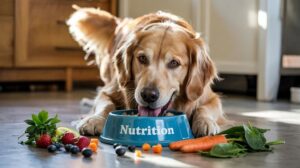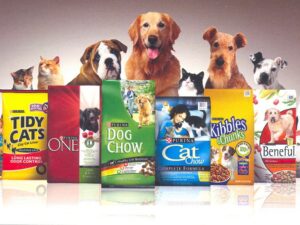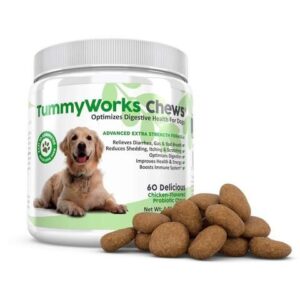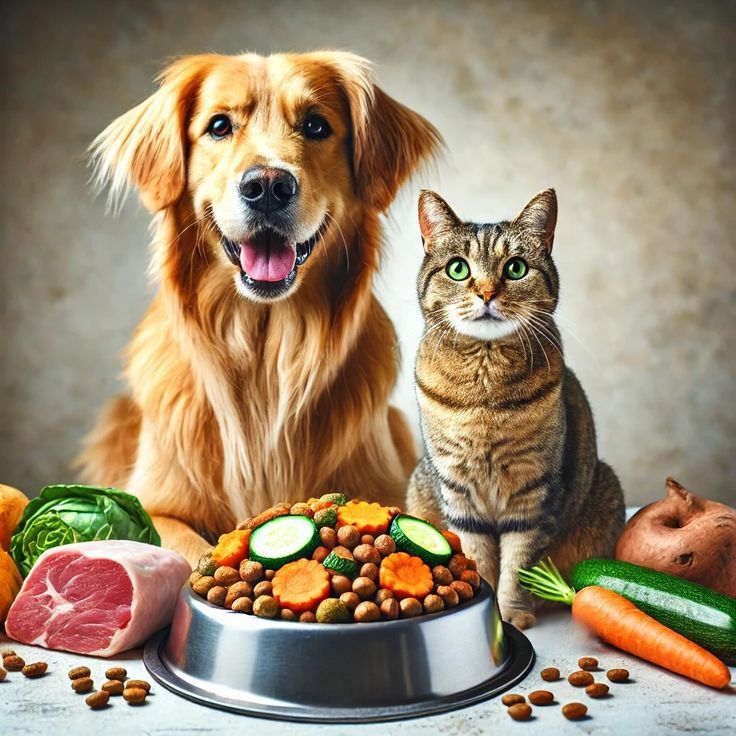The Ultimate Guide to Healthy Pets Nutrition and Diet 2025
Introduction to Pet Nutrition
If you love your furry companion, you already know how important it is to give them the best care possible. One of the most crucial parts of pet care is nutrition. A balanced diet not only helps pets live longer but also keeps their coats shinier, their teeth stronger, and their energy levels high. Just like humans, pets need a mix of proteins, fats, carbohydrates, vitamins, and minerals to thrive. The challenge is that every pet is different, and what works for one might not work for another.
The word pets doesn’t just mean dogs and cats—it also includes rabbits, hamsters, guinea pigs, birds, reptiles, and even fish. Each of them has unique dietary needs that must be met for them to stay healthy. Sadly, many owners either overfeed or underfeed their pets, or choose the wrong type of food altogether. This guide will help you understand every aspect of pet nutrition and diet, making it easier to choose the best meals for your furry friend.
Why Nutrition Matters for Pets
Nutrition is the foundation of health. For pets, it impacts not just their physical body but also their mental well-being. A dog fed a high-energy diet will be playful and alert, while the same dog fed an unbalanced diet might feel sluggish or develop behavioral problems. Poor nutrition can lead to obesity, diabetes, heart disease, kidney problems, and even shorter lifespans.
Common Myths About Pet Diets
When it comes to feeding pets, many misconceptions and false beliefs still circulate. Some believe homemade food is always healthier than commercial diets. Others think all pets need raw food to stay strong. The truth lies somewhere in the middle. While fresh and raw food can be beneficial, it also comes with risks like bacterial contamination if not prepared correctly. Similarly, not all commercial pet foods are bad—many brands follow strict nutritional standards.

1. Understanding the Basics of Pet Nutrition
Macronutrients – Proteins, Fats, and Carbohydrates
Protein is vital for building strong muscles and helping the body repair tissues effectively. Fats provide energy and support cell health. Carbohydrates supply quick fuel for active pets. The ideal mix of macronutrients changes based on a pet’s species, age, and daily activity.
Micronutrients – Vitamins and Minerals
Vitamins like A, D, E, and K are vital for vision, bone strength, and immunity. Minerals like calcium, phosphorus, and magnesium support strong bones and teeth. When pets don’t get enough of these nutrients, it can lead to major health complications.
Water – The Most Overlooked Nutrient
Water is the most important nutrient, yet it is often ignored. Good health in pets begins with a steady supply of pure, fresh drinking water. Even mild dehydration can cause stress, kidney issues, and reduced energy.
The Role of Pets in Our Lives and Their Dietary Needs
Pets are more than animals—they are family members. A child grows up with a dog as their best friend; an elderly person finds companionship in a cat. Since they share such close bonds with us, it’s our responsibility to make sure their diets match their lifestyles. An active dog that runs daily will need more calories than a senior dog that lounges most of the day. Indoor cats may need calorie control, while outdoor cats burn more energy hunting and climbing.
2. Choosing the Right Diet for Your Pet
Breed-Specific Nutrition
Some breeds are prone to joint problems, others to digestive issues. Breed-specific diets can help manage these risks.
Age-Appropriate Food Choices
Puppies and kittens require high-protein diets for growth. Adult pets need balanced diets for maintenance, while seniors often require food that supports joint and organ health.
Indoor vs Outdoor Pets – Different Needs
Indoor pets are generally less active, so they need controlled calories. Outdoor pets, on the other hand, need energy-rich food to match their activities.
3. Types of Pet Diets Available
Commercial Pet Food (Dry, Wet, Semi-Moist)
Dry kibble is convenient and promotes dental health. Wet food is tastier and provides hydration. Semi-moist is somewhere in between but often contains preservatives.
Raw Diets – Pros and Cons
A steady source of clean water is essential for your pet’s overall well-being. They can improve coat health and energy but pose risks of bacterial contamination if not prepared carefully.
Homemade Meals – Safe or Risky?
Cooking for pets can be rewarding but requires expert guidance. Without the right balance of nutrients, homemade meals can be harmful.
4. Reading and Understanding Pet Food Labels
Decoding Ingredients
Look for real meat as the first ingredient. It’s best to avoid low-value fillers such as corn, soy, and artificial ingredients in their food.
AAFCO Standards and What They Mean
AAFCO (Association of American Feed Control Officials) ensures that food meets minimum nutritional requirements. Always choose food that carries their certification.
Spotting Hidden Additives and Fillers
Many cheap brands use fillers that add bulk but no nutrition. Learn to identify them and avoid these foods.

5. Special Dietary Considerations for Pets
Pets with Allergies and Sensitivities
Some pets develop allergies to common proteins like chicken or beef. In such cases, hypoallergenic diets with unique proteins like duck or venison are recommended.
Pets with Chronic Illnesses
Pets suffering from kidney disease, diabetes, or heart conditions often require prescription diets carefully designed by vets.
Weight Management and Obesity Prevention
Obesity is one of the biggest problems in pet care today. Portion control, exercise, and choosing low-calorie food can help prevent this issue.
6. Common Mistakes Pet Owners Make in Nutrition
Overfeeding and Free-Feeding
Many owners fill up the bowl all day, leading to overeating. Scheduled feeding helps control weight.
Relying Too Much on Treats
Treats should never replace meals. They should only make up about 10% of daily calories.
Ignoring Portion Control
Always measure food based on your pet’s size, age, and activity level rather than guessing.
7. The Connection Between Pets Nutrition and Behavior
How Food Affects Mood and Energy
A pet fed high-quality protein stays active and happy, while poor nutrition can make them irritable or sluggish.
The Role of Nutrition in Training Success
Healthy food boosts concentration, making training more effective. A hungry or poorly fed pet will struggle to learn.
8. Natural Supplements for Pets
Omega-3 Fatty Acids
Supports brain development, joint health, and a shiny coat.
Probiotics and Digestive Health
Improves gut health and reduces diarrhea or constipation.
Joint and Bone Supplements
Glucosamine and chondroitin help aging pets with arthritis or joint stiffness.

9. The Future of Pet Nutrition
Sustainable Pet Food Trends
Insect protein and plant-based pet foods are emerging as eco-friendly options.
Personalized Nutrition Plans
Based on DNA testing and lifestyle, vets can now design customized meal plans.
AI and Tech in Monitoring Pet Health
Smart feeders and AI apps track how much your pet eats and adjust portions accordingly.
10. How to Transition Pets to a New Diet
Step-by-Step Transition Guide
Switch gradually over 7–10 days by mixing old and new food in increasing amounts.
Signs of Digestive Upset and Solutions
If your pet develops diarrhea, vomiting, or loss of appetite, slow down the transition or consult your vet.
11. The Human-Pet Bond and Nutrition
Feeding Time as Bonding Time
Feeding is not just about nutrition; it strengthens trust and love between pets and owners.
Training Through Nutrition
Using food as a reward makes learning fun for pets while keeping them motivated.
12. Final Tips for Pet Owners
- Before making any changes to your pet’s diet, it’s best to seek from a veterinarian.
- Balance convenience with health—sometimes mixing homemade and commercial food works best.
- Observe your pet closely; changes in appetite, energy, or coat can signal diet problems.
Conclusion
Feeding pets isn’t just about filling their bowls—it’s about ensuring they live a long, happy, and healthy life. The right balance of proteins, fats, carbohydrates, vitamins, and minerals can transform your pet’s overall well-being. Whether you choose commercial food, raw diets, or homemade meals, the key is knowledge and consistency. Remember, no two pets are the same, so always adjust based on their unique needs. After all, a well-fed pet is a happy pet, and their wagging tails or gentle purrs will be your greatest reward.
FAQs
1. What is the healthiest diet for pets?
A balanced diet that includes high-quality protein, healthy fats, and essential vitamins and minerals is best. The best nutrition plan changes according to your pet’s breed, life stage, and type.
2. How do I know if my pet is getting enough nutrients?
Look for indicators such as a glossy coat, balanced weight, energetic behavior, and bright eyes to assess their health. Regular vet visits can confirm nutrient balance.
3. Can I give human food to my pets?
Some human foods like boiled chicken, rice, or carrots are safe. However, avoid chocolate, onions, grapes, and processed food.
4. How often should I feed my pet?
Most adult pets do well with two meals a day. Puppies, kittens, and small animals may need 3–4 meals daily.
5. Are supplements necessary for a balanced diet?
Not always. If your pet is on a high-quality, balanced diet, supplements may not be needed unless recommended by a vet.

